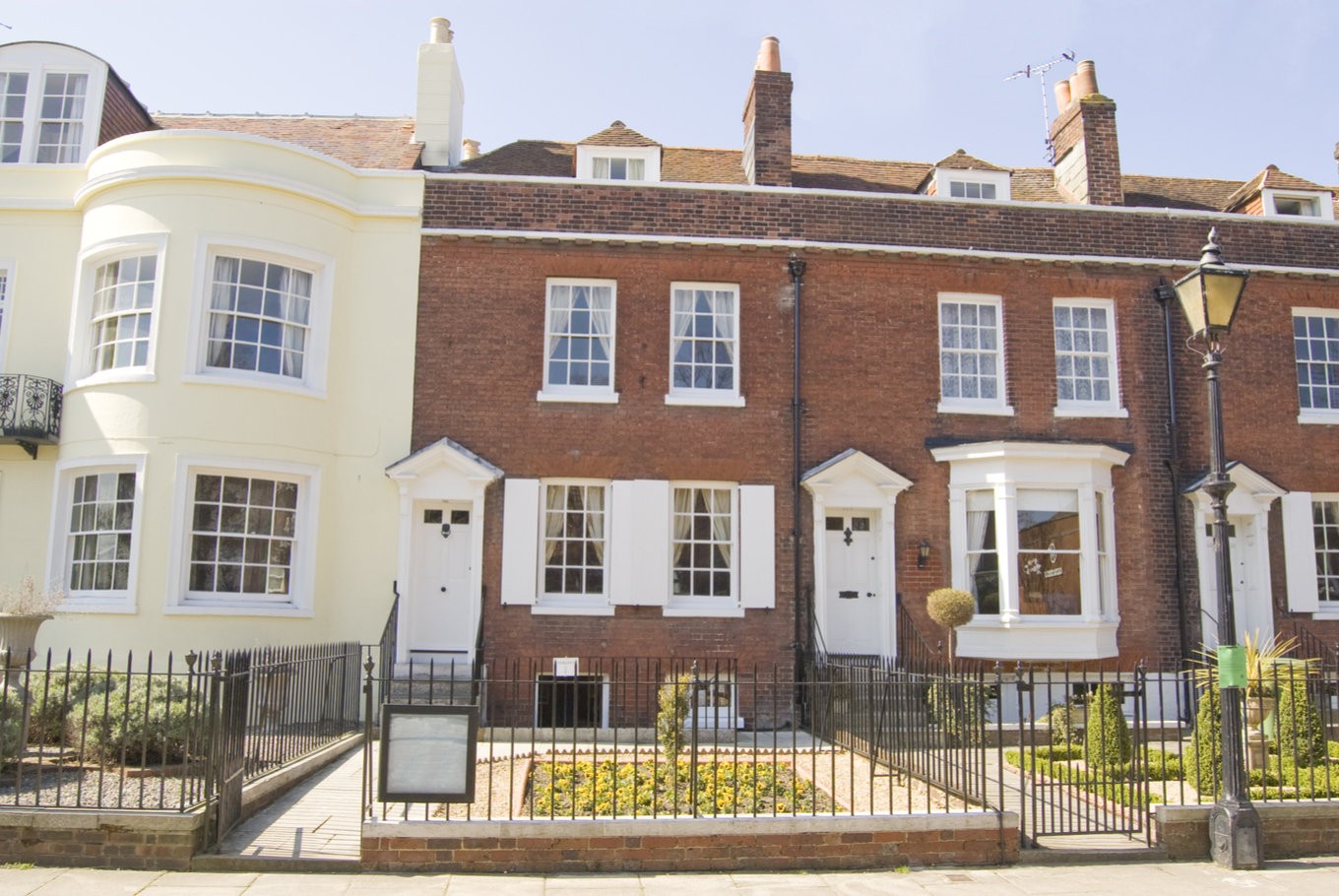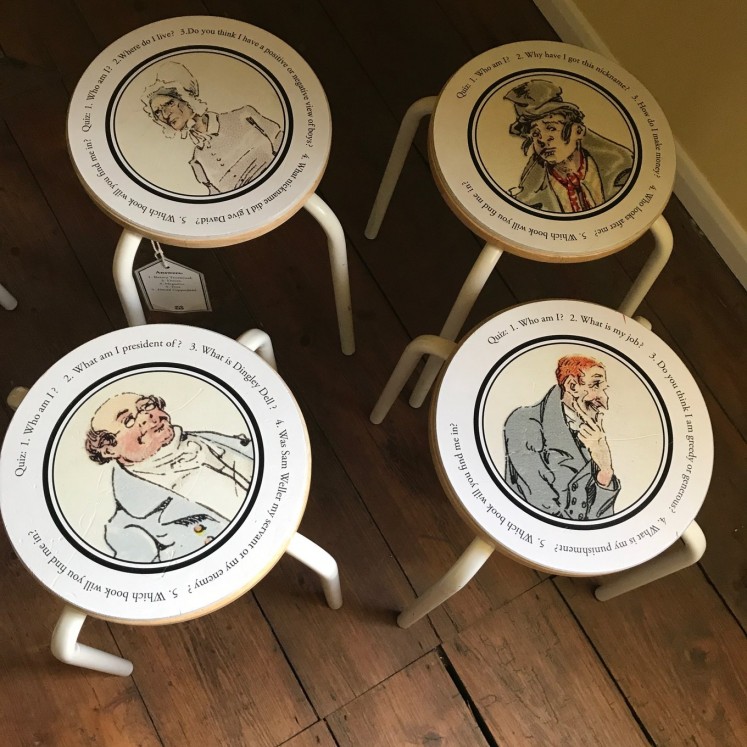Popular Reads
Top Results
Can't find what you're looking for?
View all search resultsPopular Reads
Top Results
Can't find what you're looking for?
View all search resultsCharles Dickens Birthplace Museum offers glimpse into his life and times
Founded in 1904, the museum is one of a dozen sites associated with the celebrated English author.
Change text size
Gift Premium Articles
to Anyone
T
he house on 393 Old Commercial Road in Portsmouth, England, is quiet and unassuming, a world away from the bustling area along Commercial Road a few blocks away. One can imagine the clatter of horse-drawn carriages on cobblestone.
Yet the house’s low-key bearing belies its standing as the birthplace of one of the greatest writers in English – or in any other language. “Charles Dickens was born in this house on 7th February 1812”, reads the blue plaque mounted below a second-story window.
The house is none other than the Charles Dickens Birthplace Museum. Founded in 1904, the museum is one of a dozen sites that pay homage to the writer, including the Charles Dickens Museum in Camden district or his tomb in the Poets’ Corner of Westminster Abbey, both in London. While the Birthplace Museum is often overlooked compared to its London counterparts, it provides a fascinating insight to Dickens' early life.
“When Charles Dickens was born in this modest house in Portsmouth, on 7th February 1812, Britain’s Navy was still at war with Napoleonic France”, the museum notes on its website, which calls to mind A Tale of Two Cities.
The museum tour through Dickens’ early life starts in what was once the kitchen. Now the museum's gift shop, only two items remain that show the lack of modern conveniences during the Victorian era.
“The small kitchen fire and stove was used for all the cooking in the house and also for heating the water. There was no running tap water, so every time someone wanted to wash, water had to be heated in the kitchen and carried upstairs,” the museum explains. “The Dickens family probably employed one or two servants to help with the chores, as it was possible then to hire young orphans for only a few shillings a week.”
The significance of the kitchen or the dining room on Dickens’ work and imagination cannot be overlooked. Whether it be the roast beef and Yorkshire pudding of The Pickwick Papers, or the stuffed turkey with trimmings that Ebenezer Scrooge buys for Tiny Tim and the rest of the Cratchit family in A Christmas Carol, food is a recurring theme in his work. One can almost imagine the young Charles, the second of eight children, dreaming of tucking into such feasts with his family, who were frequently in debt.
Read also: 10 notable novels for your holiday reading list
Stools bearing the images of various Dickens characters are some of the items on display at the museum. (JP/Tunggul Wirajuda)He poignantly uses culinary imagery to juxtapose poverty, with food representing prosperity and affluence. This is seen in Oliver Twist’s plaintive request, “Please sir, I want some more [gruel],” to his workhouse foreman Mr. Bumble in the eponymously named novel. Privation was very real for young Dickens, as he had to work in a factory following his father’s incarceration at the Marshalsea Debtor’s Prison when he was 12 years old.
The museum describes the life of Dickens'' newlywed parents thus: “Charles’ father, John Dickens, a clerk in the Navy Pay Office, had brought his young bride Elizabeth down to Portsmouth in the summer of 1809, renting the house as the first home of their married life. The furniture, ceramics, glass, household objects and decorations faithfully re-created the Regency style which Charles’ parents would have favored, although their actual possessions have long since been dispersed.”
Much of the museum’s period furniture and memorabilia are displayed in the parlor and dining room on the second floor, as well as the children's rooms and servants' quarters on the third floor. Now filled with pictures and trivia of various Dickens characters like Mr. Pickwick, Trotty Veck and Uriah Heep, the third-floor quarters still reflects the Victorian notion that children should be seen, but not heard.
While Dickens and his family might be long gone, the house where he was born retains the sense of the eras during which they lived. This is especially evident when one walks into the parlor. Featuring oak cabinets and ornate decorations, one can almost see men in coattails and women in bonnets having their tea. For the most part, the room is a shrine to the literary giant, filled with his busts and portraits, offset by more personal effects like his spectacles and snuff box, as well as a lock of his hair.
Yet the most insightful items are those that bring his life full circle, from the crib in his parents’ bedroom and the couch on which he died at his house in Kent. Swaddled in fabric and dwarfed by a four-post bed similar to that used by his parents, it is hard to imagine that a nascent literary giant once lay in such a small crib. The green velvet couch where he died of a stroke belies an ordinariness appropriate to a writer who elevated the life of the working class to social commentary in novels such as David Copperfield or Nicholas Nickleby.
Whether one is familiar with Dickens’ works or is relatively new to them, the Charles Dickens Birthplace Museum should be high on the list for anyone keen to learn more about the man and the times in which he lived and worked. (kes)








